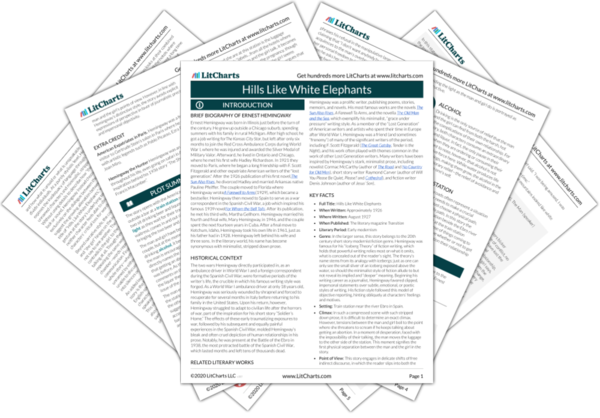The Limits of Language
As in most of his fiction, Hemingway is interested in where language breaks down between individuals and how what is unsaid or what is unspeakable can define and divide individuals. At a purely stylistic level, Hemingway exposes the inadequacy of language through his use of unnamed characters and minimalist, stripped down sentences. Without using details to describe how “the man” or “the girl” look or sound, Hemingway instead chooses to focus…
read analysis of The Limits of LanguageChoice
Significantly, this story unfolds as the man and the girl wait at a station for a train to Madrid. The heat is oppressive and the two are forced to wait, drinking away the afternoon till the train arrives. This sense of agonizing waiting permeates the story from the setting itself—a hot, dry river valley at a literal crossroads—to the crucial decision the couple is trying to make: whether or not to have an abortion.
To…
read analysis of ChoiceFreedom vs Family
As the story makes clear from the beginning, both the man and the girl are accustomed to a free, uncommitted lifestyle. When the man looks at their combined luggage, it is covered with “labels…from all the hotels where they had spent nights.” The two of them have spent a long time traveling together, going wherever they wanted without restriction. The decision to carry through with the girl’s pregnancy and create a family would completely alter…
read analysis of Freedom vs Family
Men, Women, and Relationships
At the heart of “Hills Like White Elephants” is Hemingway’s examination of the man and girl’s deeply flawed relationship, a relationship that champions “freedom” at the cost of honesty, respect, and commitment. In this sense, the man and girl represent stereotypes of male and female roles: the male as active and the female as passive. In this gender framework, the man makes the decisions and the female complies. However, as the story illustrates, such…
read analysis of Men, Women, and Relationships






